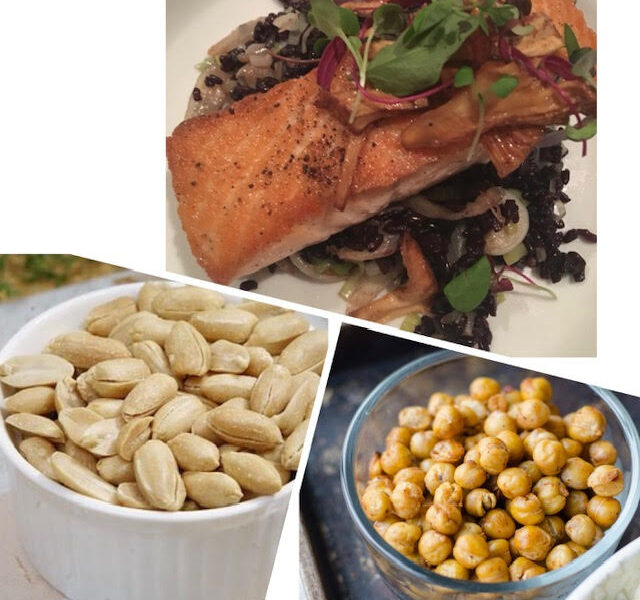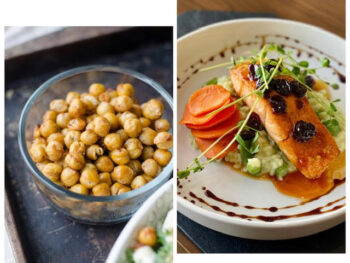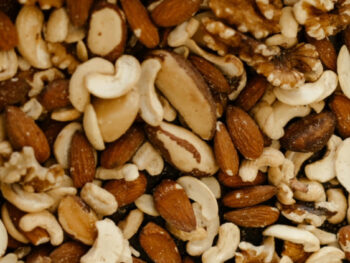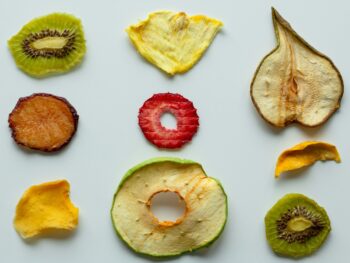Hello,
With so much “diet” talk revolving around fat and carb intake, protein can get lost in the shuffle. But there are reasons it’s called an essential nutrient.
What does protein do?
The body uses protein for growth, maintenance and repair, but, even better, high-protein foods help you feel full.
How much protein should I eat every day?
The standard recommendation for daily protein intake is 0.8 grams for every kilogram of bodyweight (multiply your weight in pounds by 0.453 to see how many kilos you weigh). But that recommendation is a bit on the low side so think of it more as the minimum. After age 35, everyone—men and women equally—needs to counteract the yearly loss of muscle by eating closer to 1 to 1.2 grams of protein per kilo. This will enable you to stay active and take the best care of yourself.
If you’re battling sarcopenia (loss of muscle tissue) or are taking a GLP-1 medication such as Ozempic or Wegovy (which causes muscle as well as fat loss), you’re likely to need 1.5 grams per kilo, about double the minimum. Ask your doctor or a registered dietitian for personalized guidelines in these situations (you’ll also benefit from strength training). Rule of thumb: Aim to eat protein-rich foods at every meal and snack. And since GLP-1s slash appetite, having smaller but more frequent meals will help you meet your protein needs even if you don’t eat three big meals a day.
Eating a variety of foods high in protein is a great way to satisfy your appetite and your body’s nutritional needs. Start with these 10 great choices, many of which have some fat and/or fiber to add to that feeling of satisfaction.
-
Skinless chicken breast
A three-ounce serving has 25 grams of protein. Fresh turkey breast offers almost as much—but avoid the deli versions, which have salt and other additives.
-
Lean beef
The leanest cuts, such as top and bottom round and round tip, provide 23 grams of protein in three ounces. Since these cuts have the least amount of fat, one or two three-ounce servings a week can be part of most people’s diets. Sirloin steak and lamb tenderloin are other lower-fat red meat options. Because beef is higher in saturated fats than other protein options like fish or chicken, it’s best to limit beef if you have high cholesterol.
-
Tuna filet
Both fish and shellfish are rich in protein. Tuna has 20 grams of protein in a three-ounce serving—canned tuna is good for you, too. Shellfish does contain cholesterol, but it is low in saturated fat, which is associated with high blood cholesterol, and is safe unless your doctor has told you otherwise.
-
Edamame
Soybeans are a top plant-based protein, and 1 cup provides over 18 grams of protein. Soybeans fall under the umbrella of legumes, along with all types of lentils, beans, split peas and chickpeas—these average about 9 protein grams in 3.5 ounces. Roasted chickpeas and hummus make great protein-rich snacks.
-
Tempeh
Tempeh is a fermented food made from whole soybeans. A 3.5-ounce serving of tempeh has between 15 and 18 grams of protein—that’s much more than tofu and soy milk. Because some brands of tempeh include brown rice and other ingredients, read labels to know what you’re getting.
-
Yogurt
A 3.5-ounce serving of yogurt has 10 protein grams, on average, with Greek yogurt containing slightly more protein. Go for yogurt with 2% milkfat, which will be more satiating than the fat-free versions. If you’re not wild about plain, try lower-sugar vanilla and add your own fruit. Avoid the sugar-laden fruit-on-the-bottom variety. Other high-protein dairy options include milk, cottage cheese and ricotta. Surprisingly, a one-ounce chunk of Parmigiano-Reggiano (true parmesan cheese) has 10 grams of protein.
-
Barley
When it comes to whole grains, cooked pearled barley offers 3.55 grams in one cup. Cooked, roasted buckwheat groats offer 5.68 grams, cooked bulgur offers 5.6 grams, and cooked rolled oats pack in nearly 6 grams. Though cooking times vary by grain, it’s easy to make a large batch that will last a few days.
-
Hemp seeds
Seeds are a great protein-rich snack and can be eaten right out of the bag. Hemp seeds have 9 grams of protein per ounce. Other top choices are pumpkin seeds and sunflower seeds. One-quarter cup of dry quinoa (yes, it’s technically a seed) delivers 6 grams (cook it before eating).
-
Peanut butter
There are 7 grams of protein in two tablespoons of peanut butter (no sugar added, please) or one ounce of peanuts. Pistachios, almonds and walnuts have 6 grams, while hazelnuts, cashews and walnuts have just over 4 grams. Because nuts are especially calorie-dense, practice portion control. Nuts make a great high-protein snack and a crunchy topping for cooked or cold grains.
-
Eggs
A large egg has 6 grams of protein. Since the egg white alone delivers 3.6 grams, egg whites are a great option if you need to watch your intake of saturated fat and cholesterol.
An adapted version of this article originally appeared in Bottom Line Health.
Have a healthy week!
Warmly,
Lisa
Dr. Lisa Young
 Enjoy some of my favorite health and wellness AMAZON PICKS.
Enjoy some of my favorite health and wellness AMAZON PICKS.





 Enjoy these 5 healthy fall favorites
Enjoy these 5 healthy fall favorites